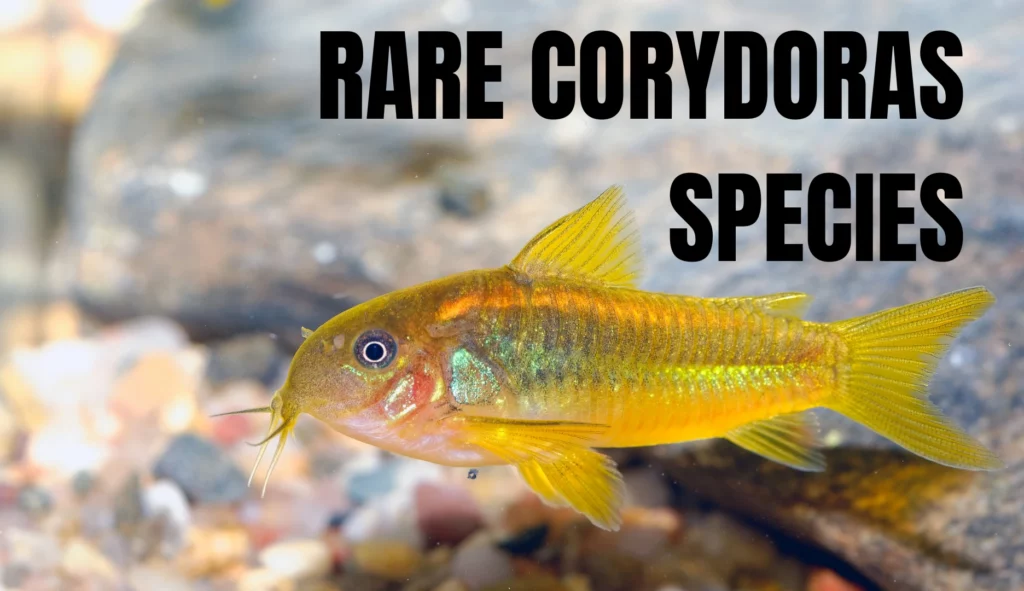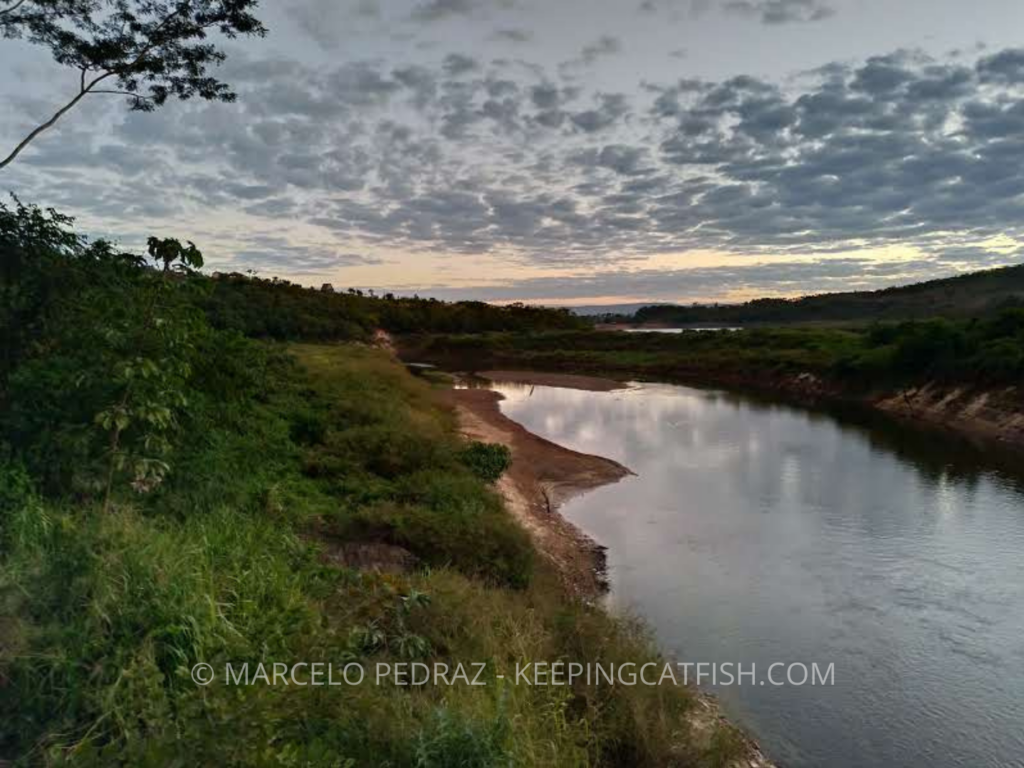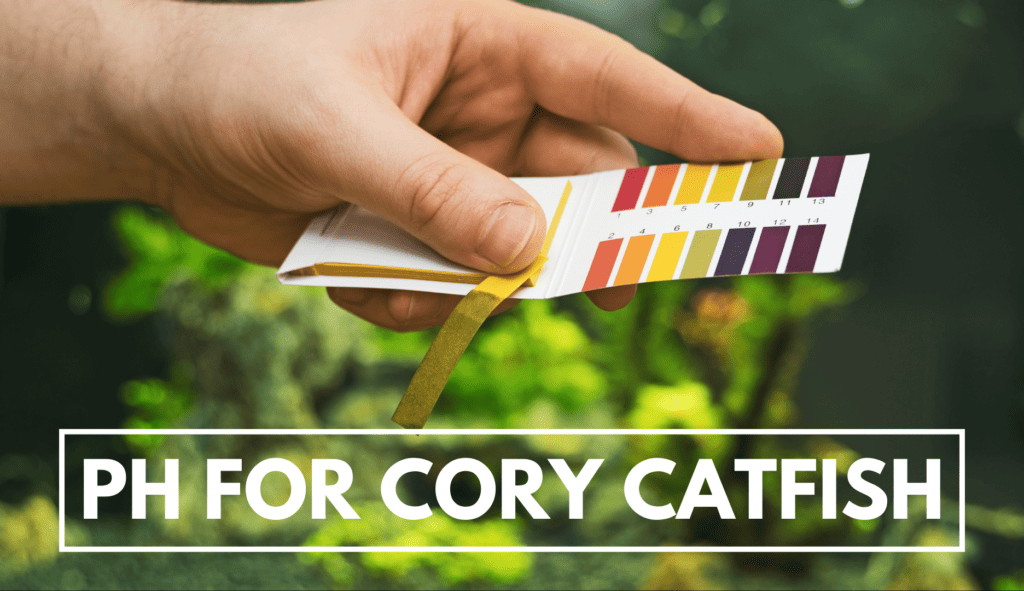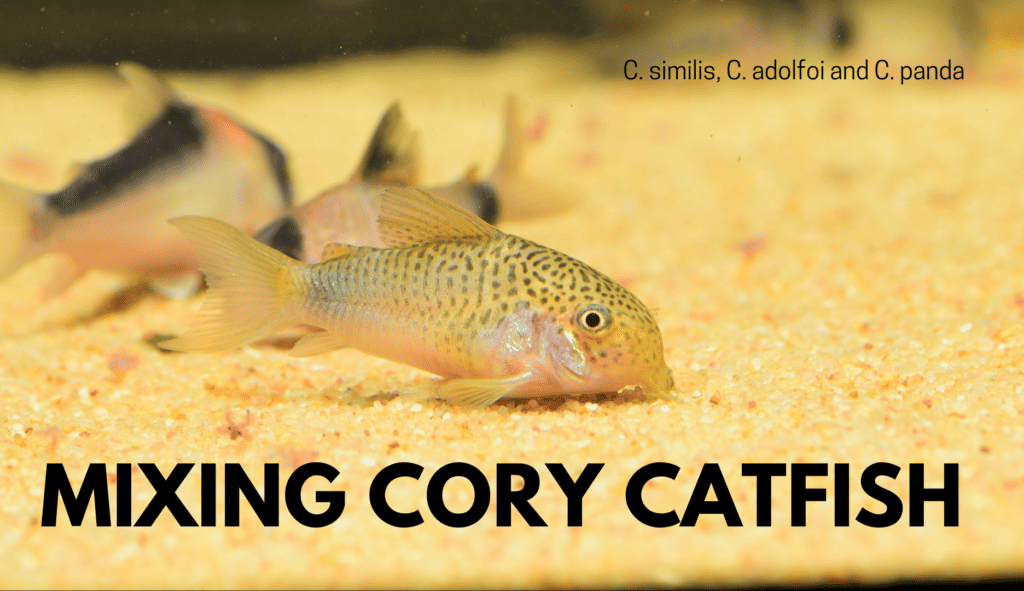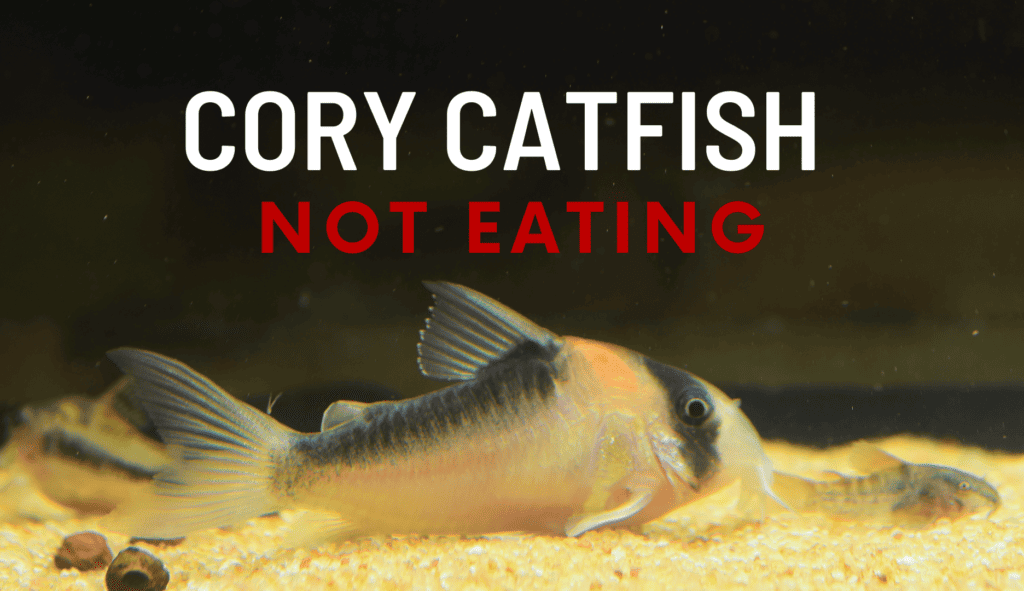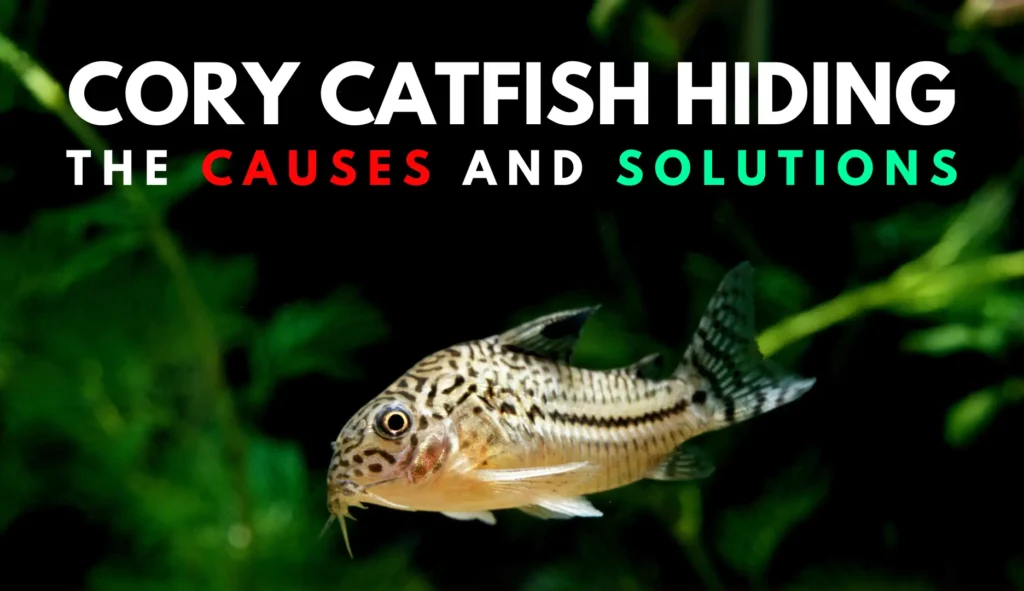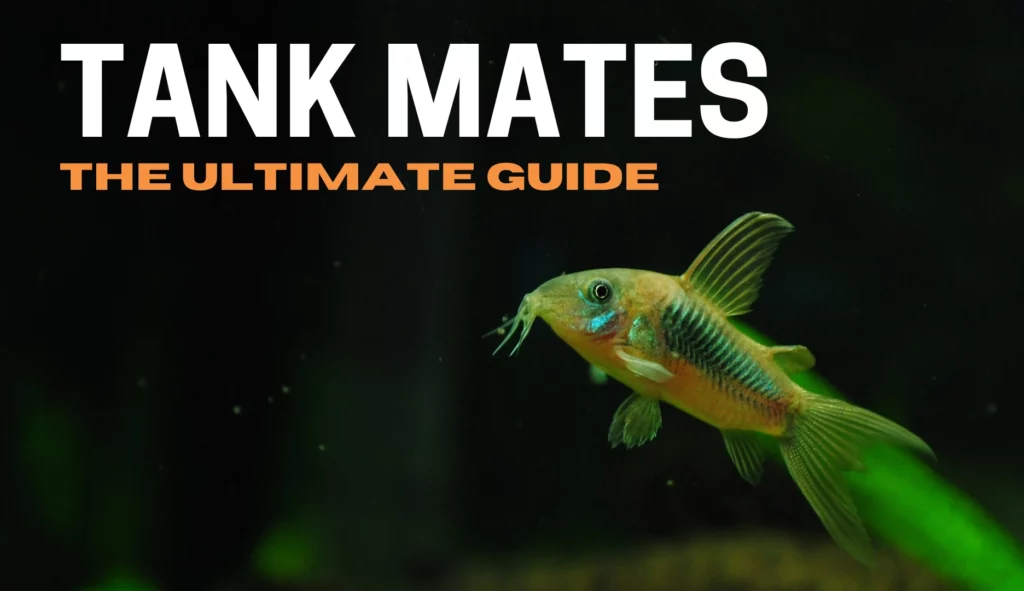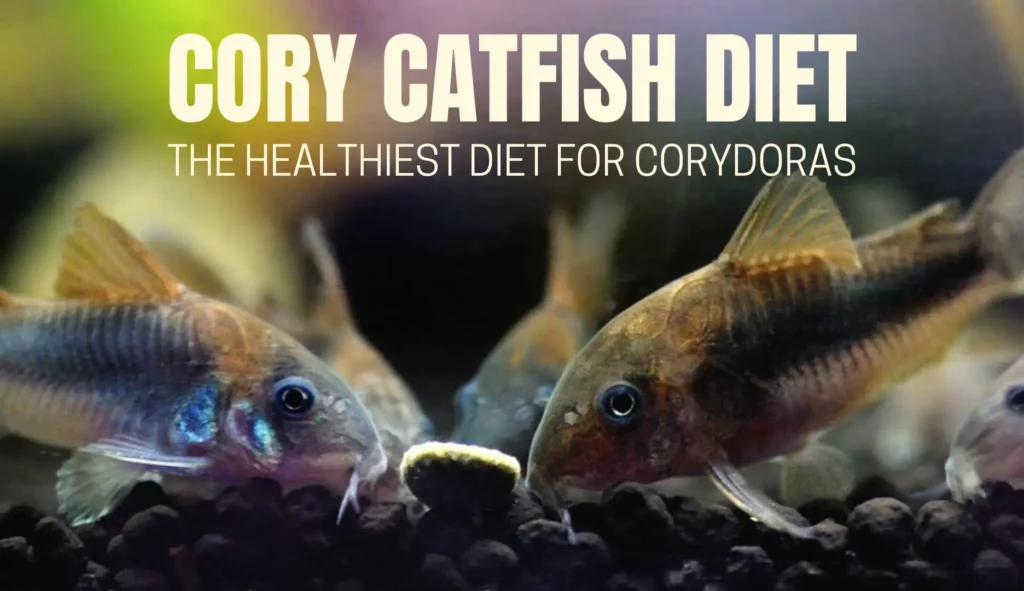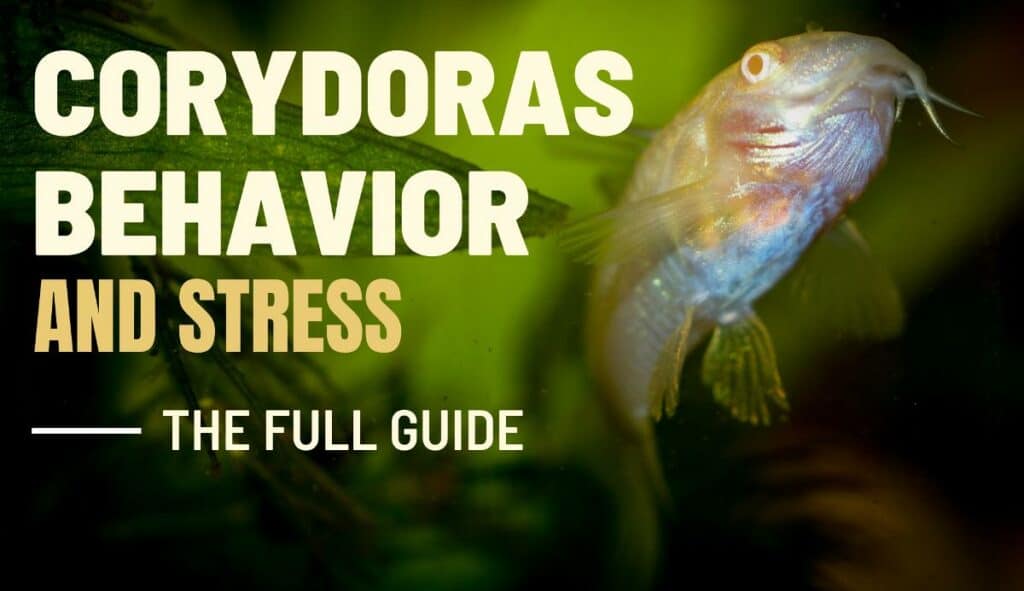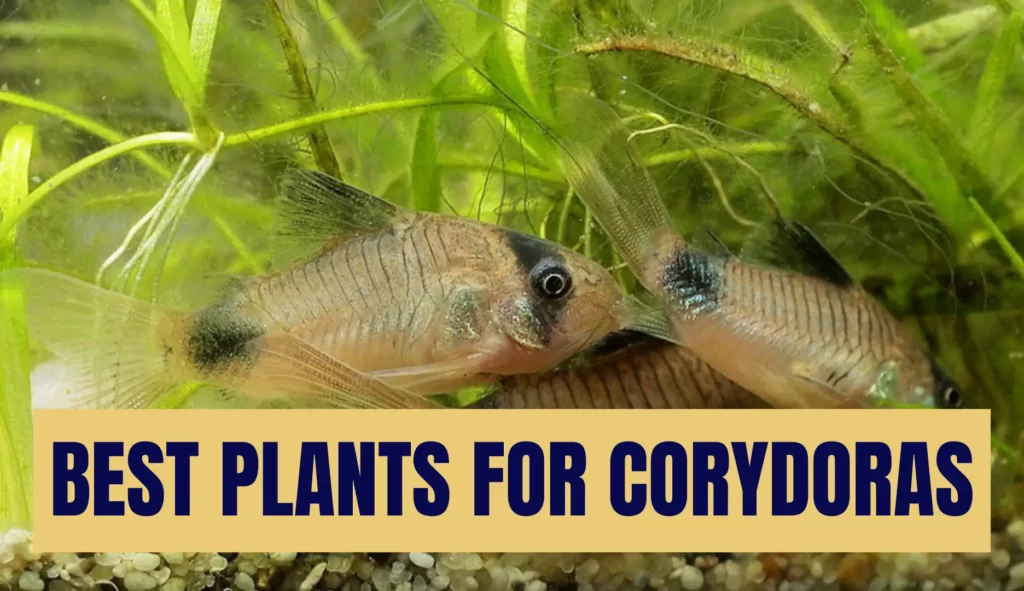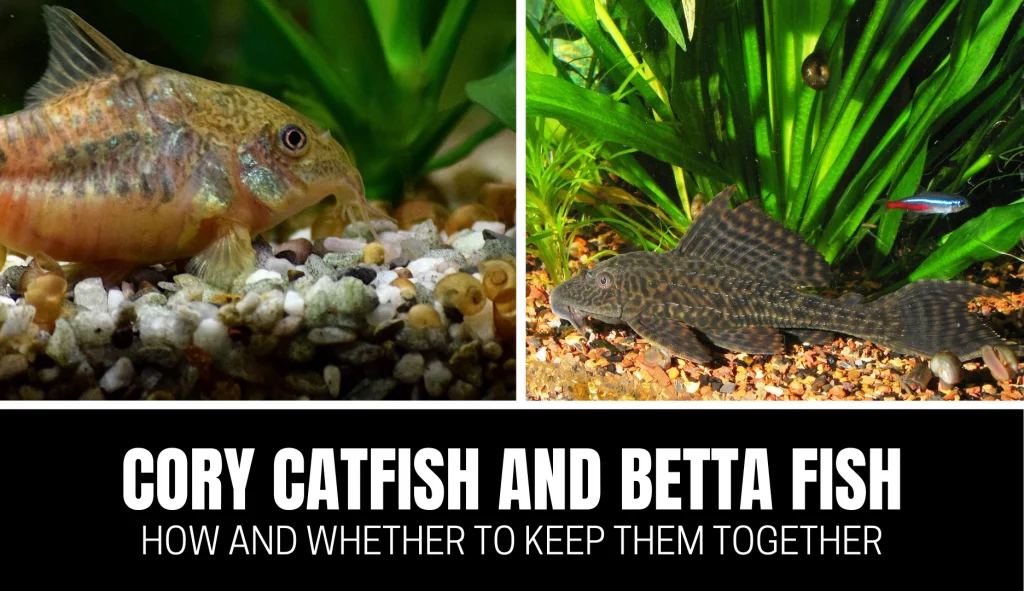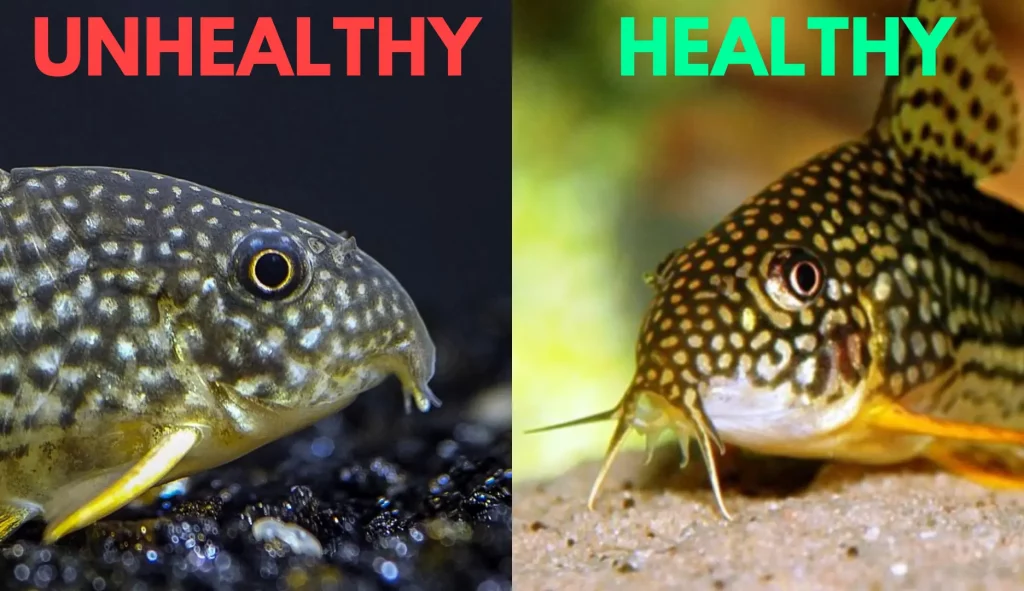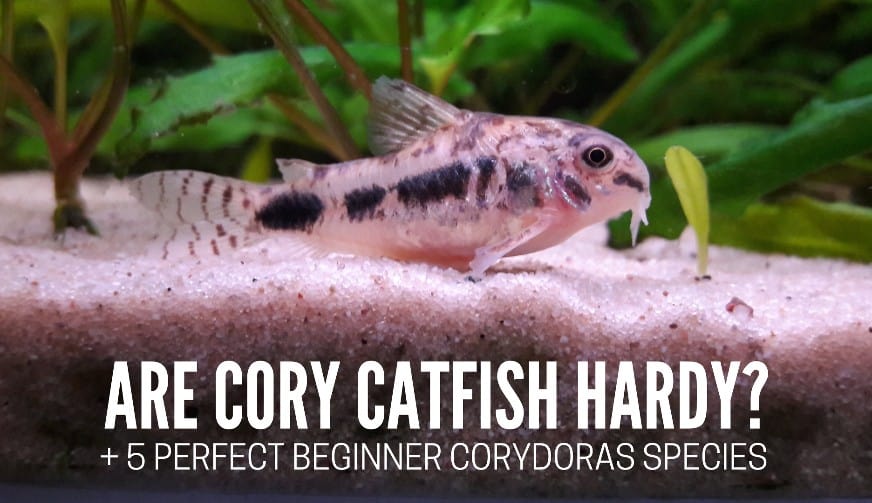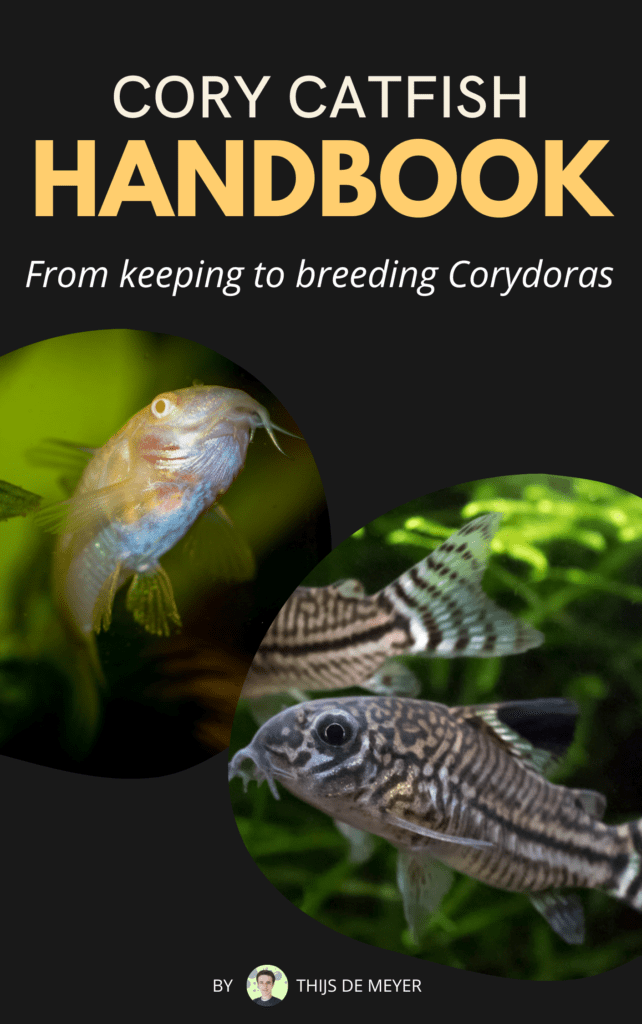Corydoras, these small fish fascinate many aquarists for their unique beauty. Some species are very rare and coveted, and we are seeing more unusual species making their way into the hobby.
1. Corydoras pantanalensis

Corydoras pantanalensis (C005) is a fish that has been in the hobby for a few years, yet it’s one of the rarest species of cory catfish.
This Corydoras presents a coloration forming a mosaic with an incredible green iridescence. Adult males are fully iridescent. It’s a big, stout fish. Its fins are relatively short compared to its body.
Similarities and uniqueness
Pantanalensis was long exported and marketed under Corydoras latus for a long time, an incredibly rare species in the hobby that also presents irisdence and robust body characteristics.
The species can also be confused with Corydoras geryi to separate these two species requires a careful eye and a little knowledge in identifying corydoras.
2. Vulcan Cory (Corydoras sp. CW111)
Vulcan cory, scientifically known as Corydoras sp. CW111 is an example of what the joint force between aquarists and scientists is capable of. This species was discovered in 2016 by a scientific expedition funded by aquarists.
These truly incredible fish words cannot describe the beauty of these corydoras. Its graceful body displays a vibrant coloration of golden and brown tones under a clear base.
These dark colors are arranged in an aberrant format, such as spots and stripes in an incredible and unique pattern, differentiating it from other Corydoras.
Its fins are elegantly, emphasizing on the dorsal of the mature males, which reaches a large size.
Similarities and uniqueness
While many Corydoras share similarities, vulcan cory exhibits distinctive coloration and unique patterns. It will hardly be confused with other species.
The vulcan cory rarity guarantees the purity of the animals in the hobby, as it is a rare sight in aquariums and a treasure for aficionados.
Why the vulcan cory is so rare
Vulcan Cory is a gem for many reasons. Its exclusivity is because of the fact that it has recently arrived on the market and there is not a massive reproduction in captivity.
Fishermen collected in a place called Serra do Cachimbo, a practically untouched place in the Brazilian Amazon, so collection expeditions are incredibly expensive, time-consuming, and hard. In addition, its beauty and the desire to own this exceptional species increase its demand.
Want to know more scientific info about this cory? Head out to ResearchGate and read the paper: Go to article
Aquarium care
To ensure the well-being of vulcan cory, it’s essential to replicate its natural environment. Provide a soft substrate, exceptional water quality, and hiding areas.
This fish appreciates strong vegetation. Keep the water temperature between 24°C and 27°C to mimic your preferences. Feed her a varied, quality diet including live, fresh foods. Keep this fish in a school of at least six individuals.
3: Corydoras maclurei CW016
Corydoras maclurei (CW016), which recently gained its scientific name (May 2023), is a unique-looking corydoras.
It has a soft color, reminiscent of Corydoras aeneus, with a dark spot on its collar and the rest of the body in a beige tone, showing greenish iridescence and silver tones.
It is an incredible fish, with an elongated and slender body, very different from other corydoras, which gives this species a distinct charm.
Its fins are not that big, but they are well projected concerning the body, adding a spectacular touch to the fish. Its nose is short and rounded.
Why is Corydoras maclurei so rare?
Apart from the article describing the species, there is very little relevant information about the species.
Its rarity arises from its beauty and difficulty in its reproduction in captivity.
Even though the drainage that this fish inhabits has a commercial collection, the area where they occur is somewhat isolated, and together with the sensitivity of the fish to stress, it makes it difficult for individuals to collect and survive, increasing their price.
Growing demand among aquarists contributes to its exclusivity.
Origin
This cory originates in the Peruvian waters of the rivers of the Madre de Deus River drainage. This is a river with acidic waters and a slightly cloudy color.
Its natural habitat is marked by shallow waters and adorned with a lot of marginal vegetation. The natural conditions in which they live influence their unique characteristics and behavior.
Read more on the wild habitat of cory catfish here.
Aquarium care
As said before, there is little reliable information about these corydoras, more specifically only 2 reports of reproduction in a well-known forum (ScotCat). They grow well in slightly acidic pH and low light.
A soft and fine substrate will allow her to feel more at ease, as well as driftwood, dry leaves, and aquarium decorations form a hiding place. Keep the water temperature between 24°C and 26°C, and ensure good filtration and low flow.
Head over to PlanetCatfish.com and look up photos of this newly discovered cory catfish.
4. Black Venezuela Cory Catfish (Corydoras schultzei)
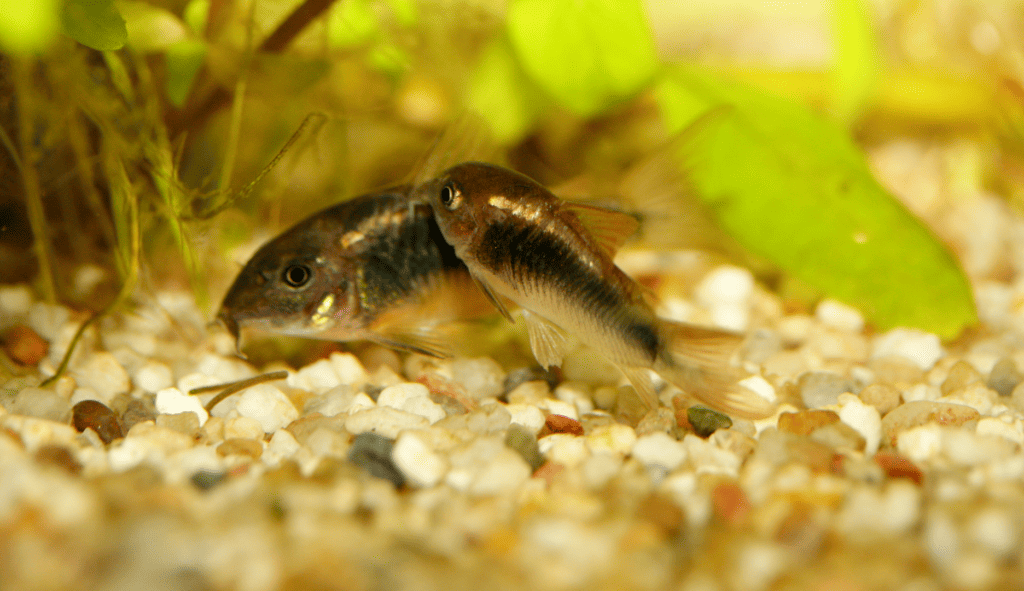
Corydoras schultzei, also known as black Venezuelan cory, is a fish bred through artificial selection by German aquarists in the 90s.
Its body has a predominantly dark color, which contrasts with iridescent spots. Its fins, as well as its body, have the classic shape of corydoras. The great aspect of this corydoras is its dark coloration.
There is much debate about this species, where some say it is just a geographical variety of aeneus, others say it is the true C. schultzei. Until a genetic study, the discussion will continue.
Similarities and uniqueness
This species, Corydoras schultzei, is not fully accepted in the scientific community, being considered a synonym of Corydoras aeneus.
It was bred in captivity in Germany and spread around the world as Corydoras sp. ‘Venezuela Black’, hence the confusion about this fish. Hardly a wild animal will present this coloration, which makes it a unique animal.
5. Corydoras oiapoquensis
Corydoras oiapoquensis, even though it has lived through its glory days, is still desirable enough to earn its place on our list.
This fish exhibits a delicate beauty. Its body has a soft color half beige and half pink; colors typical of corydoras, with small dark spots and iridescent parts. Its dorsal fin is relatively long and the fish has the robust and elegant appearance of corydoras.
Surrounding the eyes, most of the head, and also on the tail is a large black marking.
Similar other species
Among Corydoras, oiapoquensis is known for its soft coloration and unique spot pattern. However, it is practically identical to another species, which even lives in the same place as the oiapoquensis, C. condiscipulus.
What differentiates them is the length of the “nose” and the regions of occurrence.
What makes this species so rare
Corydoras oiapoquensis is rare due to little collection in the region. For a while, the lack of specimens available and the challenges in breeding them in captivity were one reason for their high value.
Its appearance and rarity are what continue to increase demand and exclusive status.
This fish is being more reproduced in aquariums, which is causing its price to drop, in addition to the offspring created in aquariums being increasingly resistant to different water qualities.
Wild habitat
Corydoras oiapoquensis is native to the clear tea-tinged waters of the Oiapoque River, French Guiana. Its natural habitat waters with moderate flow, little aquatic vegetation, few dry leaves, and a bottom of fine sand.
There is not much information available about the chemistry of the water in its biotope.
Aquarium care
6. Horseman's Cory Catfish(Corydoras eques)
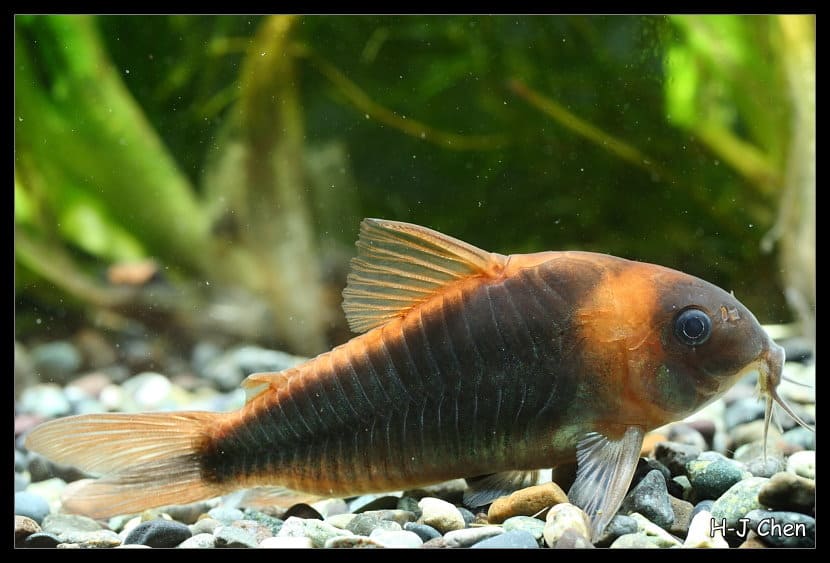
Corydoras eques is a uniquely beautiful Corydoras. Featuring a turquoise blue color and an orange band between the pectoral fins and head, it has an incredible appearance.
Fins have their rays also with an orange tone. The change in color concerning the environment is a feature of this species.
Similar other species
There are three species quite similar to Corydoras eques. The best way to differentiate them is by the collection location. The true C. eques comes from Brazil, while similar ones (C. rabauti CW043 and C. zygatus CW007) are from Peru.
The rarity of Corydoras eques underscores its uniqueness making it a coveted treasure for aquarists in search of elegance and splendor.
The rarity of Corydoras eques is linked to its growing demand and the challenges in its large-scale captive breeding. Its appearance and the difficulty in reproducing it consistently contribute to maintaining the unique status of the species.
Wild habitat/origins
Corydoras eques originate in Brazil, more specifically in the Amazon River. Its natural habitat exhibits gentle water flow, areas of marginal vegetation, and sandy substrate. These murky and slightly muddy waters influence its distinctive appearance.
Care
It is a very peaceful and gregarious species and should be kept in groups of at least six individuals. In its natural environment it lives in shoals ranging from 20 to 100 specimens.
Because it breathes atmospheric air, it can swim quickly to the surface to gulp air. They live well in neutral pH and temperature between 22 to 28 Celsius.
You can keep it in a community aquarium with small and equally peaceful fish and have nocturnal habits.
7. Gold laser Cory Catfish(CW010)
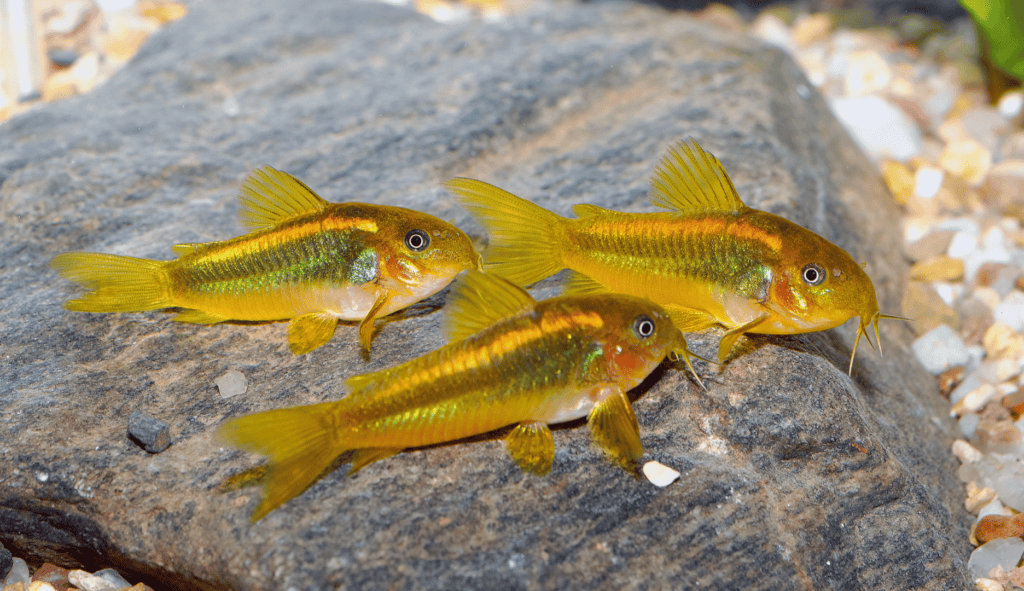
Corydoras aeneus CW010, known as Laser Striped Neon Gold Corydoras, is a fish that has been exploding in the aquarium hobby since its appearance. Its body is dark in color as a base, with an intense golden stripe and iridescence that seem to glow like laser beams. Its format is the classic Corydoras but a little more slender.
Among Corydoras, CW010 stands out for its naturally golden and unique color, being difficult to confuse with other species.

